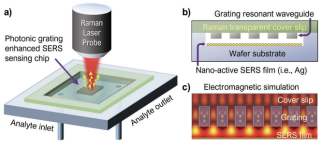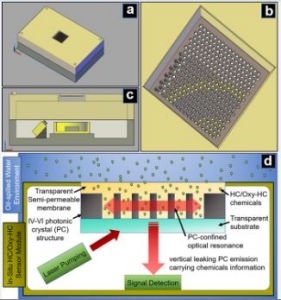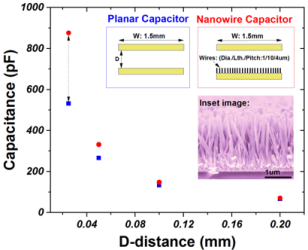The project aims to develop, deploy, and demonstrate a scalable, integrated, surface sensor network system that measures and monitors methane concentration and leak plumes in a large region over the Anadarko Basin. By integrating state-of-the-art sensor technologies with advanced emission modeling methods, the integrated network system may offer a turnkey solution for regional-scale monitoring of methane emissions in real time. The project’s specific objectives are to: (1) create a distributed sensor network of basin-scale coverage; (2) develop autonomous-capable mobile sensing tools using an electric vehicle and unmanned robot; (3) quantify and identify emission sources using advanced modeling methods; and (4) establish an online emission visualization dashboard allowing stakeholders to take quick mitigation actions.
Opening Student Research Opportunities:
The School of Electrical Engineering at the University of Oklahoma in the United States is actively recruiting Ph.D. students (fully funded).
Research directions: Our research group has long-term support from multiple national research funds, including gas detection technology based on the Internet of Things (IoT), construction and layout of detector network devices, and research, development, and application of nanophotonics, micro-nano-fabrication, surface-enhanced Raman spectroscopy, and optical gas/liquid detection technologies.
We welcome students with backgrounds in related disciplines such as materials science and engineering, microelectronics engineering, physics, chemistry, environmental science, and biomedical science to apply actively.
English proficiency requirements for foreign student applicants: TOEFL score of 79 or IELTS score of 6.5. GRE is not required.
PhD students will actively participate in various scientific research projects of the research group, publish papers, participate in various scientific research activities both within and outside the university, and showcase outstanding results at international conferences. Students who perform well will be given priority to intern and work in national laboratories. In addition, our research group currently has summer cooperative projects with two universities in Japan, Osaka University and Yamagata University, and outstanding students will have the opportunity to be sent to Japan for summer exchange programs for 2-3 months.
Research group webpage: https://www.ou.edu/coe/ece/weng
This recruitment advertisement is long-term effective. Graduating students in 2024 can contact us for early admission applications. If you have specific questions, please do not hesitate to send an email to binbinweng@ou.edu.
The University of Oklahoma is one of the top 100 universities in the United States according to the U.S. News & World Report ranking. It is ranked among the top 50 public universities in the United States and has the largest number of national academic scholarship winners among public universities in the United States. The donations received by the university have quadrupled in the past 13 years, making it one of the public universities in the United States that receives the most donations. Many of the university's graduate programs are ranked among the top 75 in the United States by US News.
Regarding daily life: Norman is the main campus of OU that boasts convenient living and shopping areas, a safe campus, and close to Oklahoma City and Dallas, Texas. There are many restaurants, churches, and entertainment venues for all students. There are various sports activities, including a top-notch American football team, gymnastics, tennis, soccer, and many other community sports activities, which enrich your extracurricular life.
SELECTED TOPICS:
1. Regional Scale IoT-sensor network based Methane Monitoring System

2. SERS-enabled Ultra-Sensitive Forever Chemical Detection Solution

Per-and polyfluoroalkyl substances (PFAS) are known as “forever chemicals” as they are extremely persistent with half-lives often estimated in centuries. These chemicals are broadly distributed and associated with a myriad of human health and environmental concerns, even when exposures occur at vanishingly low concentrations. To diagnose and preserve national water resources, PFAS must be reliably and rapidly detected. However, current methods of PFAS analysis are time-consuming, complicated, and expensive ‘hyphenated’ analytical procedures that lack the responsiveness essential for public health protection and mitigation assessments. This project aims to develop a novel proxy method (a sensor) to overcome the PFAS detection and quantification challenges and to enable environmental stewardship and reach public health goals.
3. Photonic-On-Chip Chemical Sensing

Hazardous gas detection has vast applications in environment monitoring, health diagnosis, industrial safety control and national security. Infrared absorption spectroscopy has been well-received as one of the most preferable techniques. Unfortunately, limited by the Beer-Lambert Law, a long optical path is required in conventional spectrometers, which makes the systems too bulky to be suitable for portable applications.
Our research aims to pioneer a systematic study on a new gas sensing method using photonic crystals technique. This method could potentially overcome the limitation of the Beer-Lambert Law that prevents the progress of the traditional gas absorption technology, and expands the detection coverage of gas species which couldn’t be identified by near-infrared devices.
4. Passive Radiative Cooling Desalination

From the fundamental thermodynamics, the efficiency of heat-exchange-based desalination systems is majorly dependent on the temperature difference between a heat source and a heat sink. By far, the energy conversion process of thermal desalination systems majorly draw support from ambient air as the cooling medium for water condensation.
The team aims to develop an innovative passive photonic cooling technique and transform it into a window blinder shading configuration as shown in the figure 1. It is anticipated that to integrate a passive radiative cooling module into the modular multistage thermal desalination system, could significant improve the efficiency, capacity, cost and simplicity of the state-of-art thermal desalination process for the produced water treatment in oil and gas industry.
5. Nanowire Enhanced Pressure Sensing

Hypertrophic burn scars are the most common complication of a burn injury and can severely limit a survivor’s ability to function as well as affect their body image. Such scars occur more frequently in women and patients of younger age groups. Failure to accurately document the pressure magnitude could lead to inconsistency in the therapeutic efficacy of pressure garment therapy. Consequently, a precise and real-time pressure monitoring technique is widely desired. The research focuses on developing a high-precise, wearable and wireless pressure sensor. The approach could help to realize precise real-time monitoring of local pressure the garment applies to scars, and requires no electric-wired connections for powering the sensor and collecting the feedback data. This research will generate crucial insights of the physical mechanism that governs the interaction of applied pressure with both resonant frequency from LC circuit and the hypertrophic scars, thus offering scientific knowledge necessary for controlling and optimizing the pressure sensing functionality of the device.
FUNDED RESEARCH PROJECTS:
- Binbin Weng, Ming Xue, Xiaoming Hu, et al., "A Regional-Scale Showcase of Hybrid Methane Sensing Networks in the Anadarko Basin", Department of Energy, Innovative Methane Measurement, Monitoring and Mitigation Technologies Program (IM4), DOE-13740409 (2023-3)
- David Ebert, Binbin Weng, Ming Xue, et al., "A Multi-Scale Methane Monitoring System for Enhancing Emission Detection, Quantification, and Prediction", Department of Energy, Innovative Methane Measurement, Monitoring and Mitigation Technologies Program (IM4) (2023-3)
- Binbin Weng, Mark Nanny, Rouzbeh Moghanloo, "A Rapid Raman Sensing Solution to In-situ Measure Per-and Polyfluoroalkyl Substances", US Geological Survey, G23AP00039-00 (2023-2)
- Madalina Furis, Binbin Weng, Ian Sellers, Joe Tischler, "PIRE: US-Japan Partnership in Excitonic Soft Materials for Clean Energy", National Science Foundation Partnership for International Research and Education (PIRE) Program, NSF-2230706 (2023-1)
- Binbin Weng , "A Novel Photonic Sensing Technology for Sour Gas Detection in the Oil and Gas Industry," Oklahoma Center for the Advancement of Science and Technology (OCAST), AR21-052 (2021-2023)
- Binbin Weng , Mark Nanny, Joe Suflita, Rouzebh Moghaloo, "Real-time Resonant Cavity Enhanced SERS Photonic Device Development," University Funding Program/OU-MCEE, Chevron Corporation (2020-2021)
- Zhisheng Shi, Binbin Weng , "Semiconductor MWIR Detector Fabrication and Characterization", U.S. Department of Defense, HSAP/URAP Program, 2021
- Binbin Weng , "Sensor Development for Multiple Hydrocarbon Gases Detection " BHGE Innovative Research Program, Baker Hughes - A GE Company, 2019
- Zhisheng Shi, Binbin Weng "Study of a Newly Unveiled Complex-Oxide and Semiconductor for Low-Cost Uncooled MWIR/LWIR Camera." U.S. Department of Defense, Army Research Office (DoD-ARO), #W911NF-18-1-0418 (2018-2021)
[ Back to top ]

